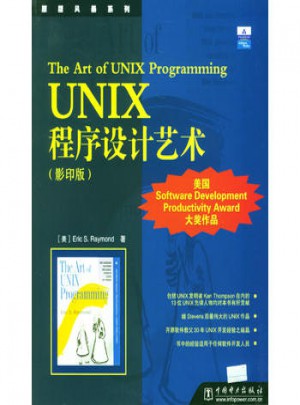

編寫更好的軟件:30年UNIX開發經驗的結晶! 本書是作者封筆30年后歷時5年創作而成,是一部難得的軟件工程方面的佳作。作者首次將哲學、設計模式、工具、文化和傳統結合在一起,使得UNIX成為世界上好且最創新意義的軟件,并展示了如何將其拓展到Linux和當今的開源(open-source)運動中。通過取自最主要的開源項目中的示例,作者向UNIX和Linux編程人員展示了如何更巧妙地創建軟件,使其更雅致、更靈巧、更具可重用性且具有更長的生命期。 Raymond借鑒了以下13位UNIX先鋒人物的觀點: Ken Thompson,UNIX的發明者 Ken Arnold,4BSD UNIX的創建者之一,也是《The Java Programming Language》的作者之一。 Steven M.Bellovin,Usenet的創始人之一,也是《Firewalls and Internel Security》的作者之一。 Stuart Feldman,貝爾實驗室UNIX開發組成員,也是《make》和《f77》的作者。 Jim gettys和Keith Packard,X視窗系統的主創人員。 Steve Johnson,《yacc》和《Portable C Compiler》兩書的作者。 Brian Kernighan《The C Programming Language》、《The UNIX Programming Environment》及《The Practice of Programming》等幾本書的作者之一,也是awk編程語言的作者之一。 David Korn,korn shell的創始人,也是《The New Korn Shell Command and Programming Language》的作者。 Mike Lesk,貝爾實驗室開發組成員,ms宏包、tbl和refer工具以及lex與UUCP的作者 Doug Mcllroy,貝爾實驗室研究組主任,UNIX即誕生于此;同時他還是UNIX管道的發明者。 Marshall Kirk McKusick,4.2BSD快速文件系統的開發者,4.3BSD和4.4BSD開發組的領導。 Henry Spencer,早期UNIX開發者中的佼佼者,他創建了getopt、及時個開源字符串庫以及用于4.4BSD的正則表達式引擎。 "Reading this book has filled a gap in my education. I feel a sense of completion, understand that UNIX is really a style of community. Now I get it, at least I get it one level deeper than I ever did before. This book came at a perfect moment for me, a moment when I shifted from visualizing programs as things to programs as the shadows cast by communities. From this perspective, Eric makes UNIX make perfect sense。" 作者簡介: Eric S.Raymond多年前即從事NUIX開發。他以開源社區巡回大使的身份而著稱。他在著名的《The Cathedral and the Bazaar》、《大教堂和市集》中發表了開源運動的宣言,并且還編著了《The New Hacker's Dictionary》一書。
美國Software Development Productivity Award大獎作品;包括UNIX發明者Ken Thompson在內的13位UNIX先鋒人物均對本書有所貢獻;繼Stevens后偉大的UNIX作品;開源軟件教父30年UNIX開發經驗之結晶;書中的經驗適用于任何軟件開發人員。"這是一本令人愉快且著迷的讀物,其中解決問題的經驗適用于在所有操作系統上工作的編程人員。"
Preface
I. CONTEXT.
1. Philosophy.
Culture? What culture?
The durability of Unix.
The case against learning Unix culture.
What Unix gets wrong.
What Unix gets right.
Basics of the Unix philosophy.
The Unix philosophy in one lesson.
Applying the Unix philosophy.
Attitude matters too.
2. History.
Origins and history of Unix, 1969-1995.
Origins and history of the hackers, 1961-1995.
The open-source movement: 1998 and onward.
The lessons of Unix history.
3. Contrasts.
The elements of operating-system style.
Operating-system comparisons.
What goes around, comes around.
II. DESIGN.
4. Modularity.
Encapsulation and optimal module size.
Compactness and orthogonality.
Libraries.
Unix and object-oriented languages.
Coding for modularity.
5. Textuality.
The Importance of Being Textual.
Data file metaformats.
Application protocol design.
Application protocol metaformats.
6. Transparency.
Some case studies.
Designing for transparency and discoverability.
Designing for maintainability.
7. Multiprogramming.
Separating complexity control from performance tuning.
Taxonomy of Unix IPC methods.
Problems and methods to avoid.
Process partitioning at the design level.
8. Minilanguages.
9. Transformation.
10. Configuration.
11. Interfaces.
12. Optimization.
13. Complexity.
III. IMPLEMENTATION.
14. Languages.
15. Tools.
16. Re-Use.
IV. COMMUNITY.
17. Portability.
18. Documentation.
19. Open Source.
20. Futures.
A. Glossary of Abbreviations.
B. References.
C. Contributors.